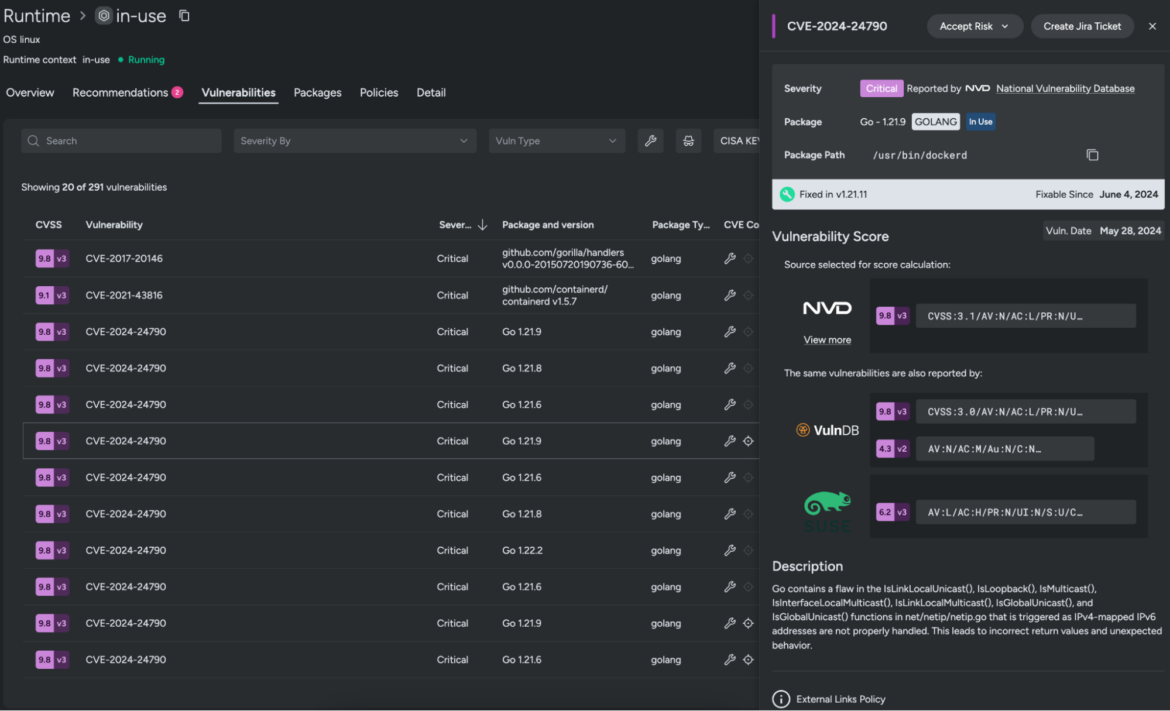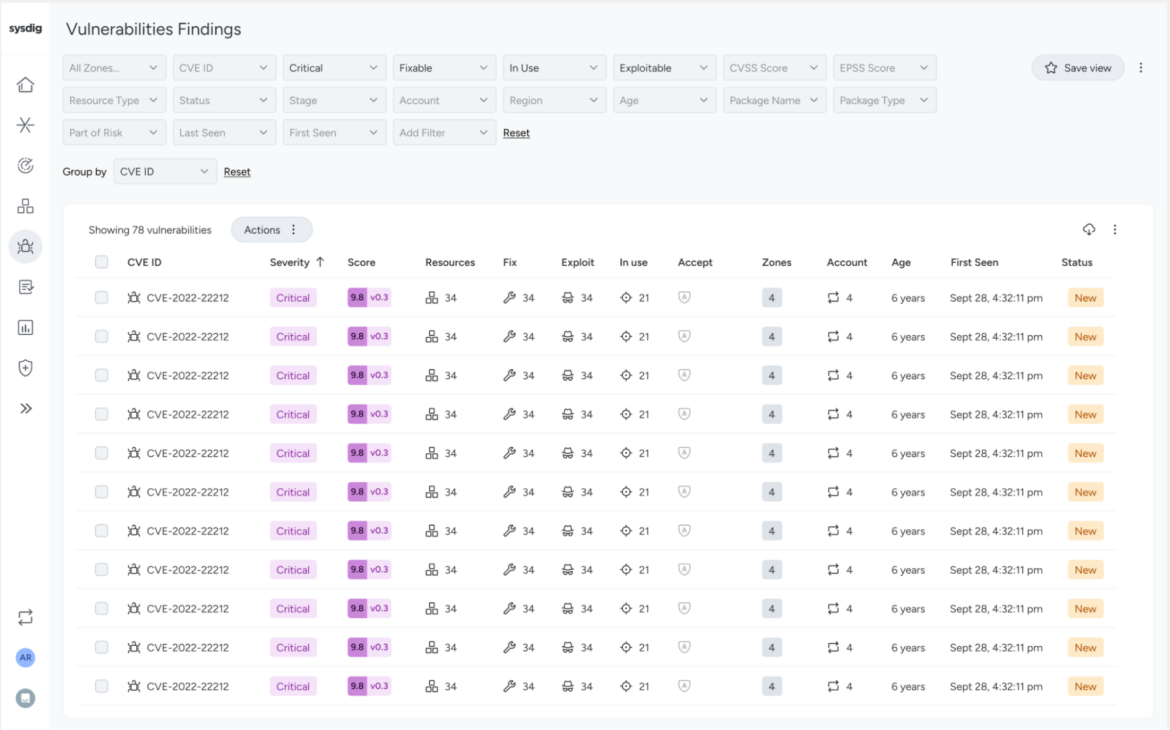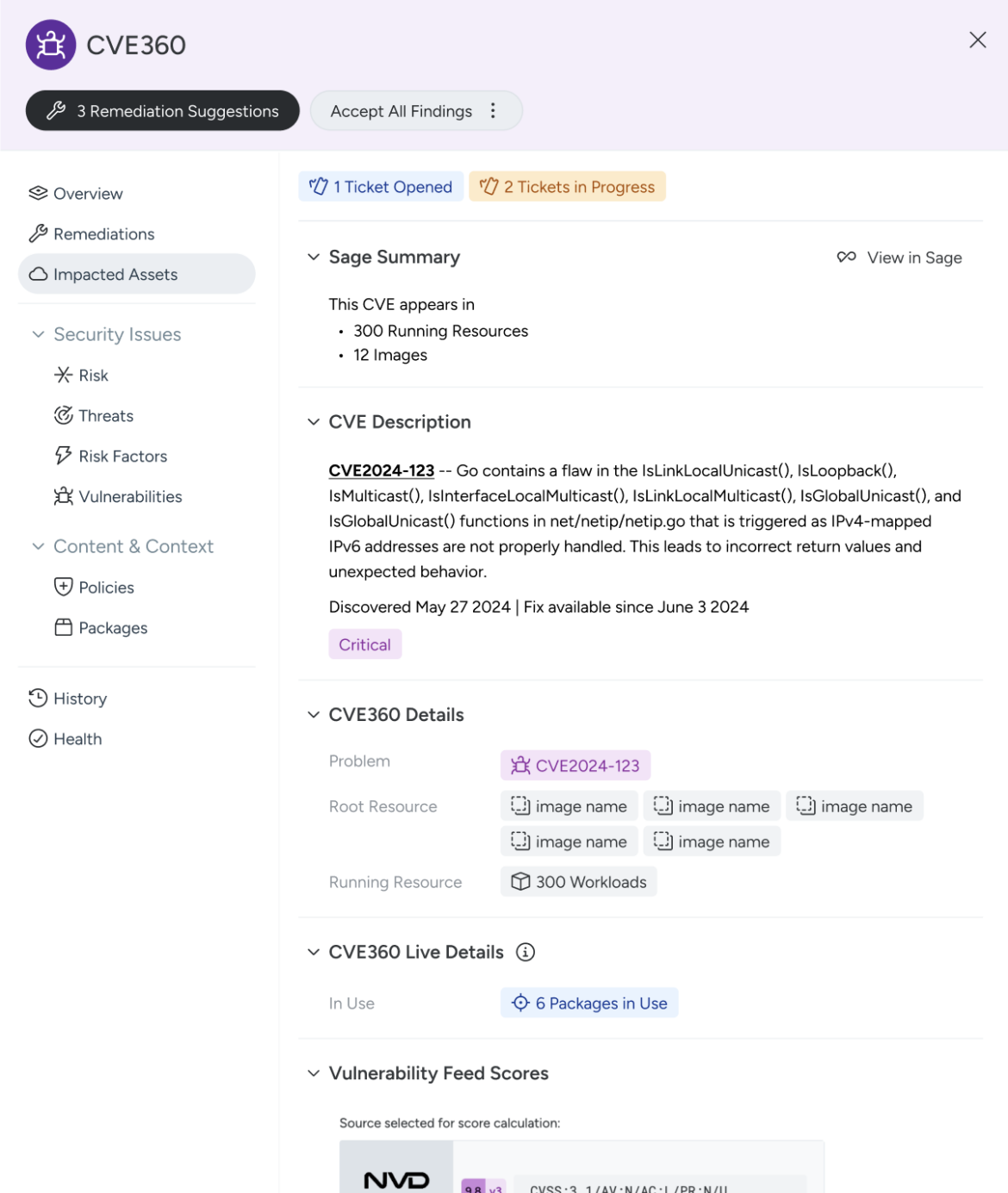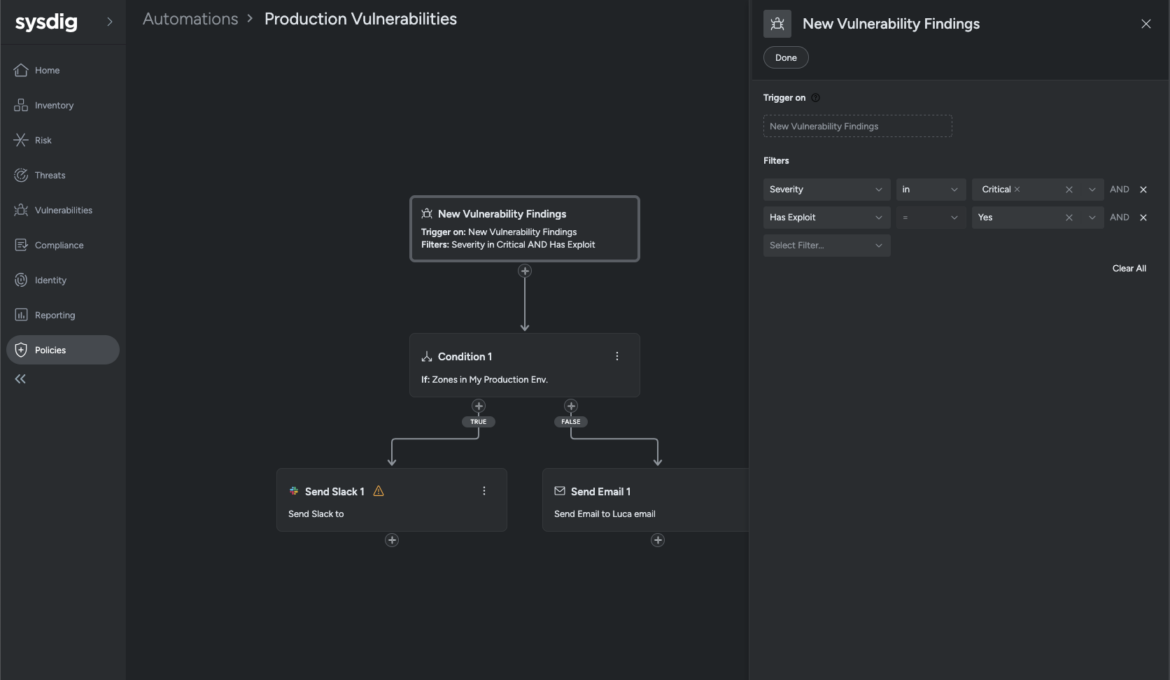Vulnerability management in the cloud is more challenging than ever. Security teams are drowning in vulnerability alerts, asked to deal with them quickly even as the list continues to expand. What they lack is a clear path to remediation. Legacy tools flood teams with critical alerts, while offering little guidance on which fixes will be most impactful.
Vulnerability management isn’t just about identifying the biggest risks — it’s about taking decisive action. Without the right context, teams waste time fixing issues that don’t actually reduce risk or improve their security posture while the most critical issues remain unresolved.
At Sysdig, we believe vulnerability management should be about fixing what matters, not just showing you problems. That’s why we’re excited to introduce several new vulnerability management features, aimed at giving security teams the context they need to reduce wasted effort and focus on meaningful remediation. With deeper insights and more efficient workflows for managing vulnerabilities, security teams can move beyond reactive fixes and take a more strategic approach to securing their cloud.
In-use for Hosts
Sysdig helps customers sort through massive backlogs of vulnerabilities by filtering for in-use vulnerabilities. By isolating vulnerabilities that are in packages loaded at runtime, security teams can reduce their scope to focus their efforts on the small fraction of this backlog that represents true risk, in some cases by over 95%.
With the launch of in-use for hosts, Sysdig is extending the power of in-use vulnerability prioritization to traditional hosts and virtual machines. This enables security teams to reduce their scope to the most exploitable vulnerabilities with a single click, saving hours of manual analysis. Sysdig’s expanded coverage of in-use helps organizations reduce noise and alert fatigue no matter where their workloads are running.

Revamped Product Experience
Time is everything for security teams, and vulnerability management can easily become a time-consuming process. Sysdig’s new revamped product experience centered on our graph database is tailored specifically for practitioners that oversee their organization’s vulnerability management programs, providing a complete picture of vulnerabilities and accelerating time to remediation.
Vulnerability Findings
With the Vulnerability Findings page, security practitioners now have flexible views of all vulnerabilities in their environment, with the ability to slice and dice the data the way they need. From this view, security teams can filter data based on various criteria, including by zone, region, connected risks such as workload network exposure, and vulnerability age — all aimed at extracting critical insights on what needs to be fixed right now.

CVE360
Visibility is another key challenge that vulnerability management program owners face, especially in constantly changing cloud environments where time to resolution and understanding a problem matters most. CVE360 addresses a portion of this challenge, delivering a complete, real-time view of any CVE (Common Vulnerability and Exposure), with the full context needed to act on it swiftly. At a glance, security teams can see the source or root cause of the CVE, all affected resources, and available remediations, as well as understand everything Sysdig knows about the CVE without having to leave our UI.

Additionally, CVE360 provides the ability to tie vulnerabilities to broader risk factors and threats, showing how they fit into the organization’s broader security posture. This connected approach enables a more contextual and adaptive take on vulnerability management, ensuring teams can quickly focus on impactful remediation and fix issues at the source.
Automated Alerting and Ticketing
No matter how effectively an organization can prioritize risks, critical resources and sensitive data will remain exposed if vulnerabilities are not fixed. Teams that oversee vulnerability management know that one of the greatest challenges can be identifying owners of resources and getting them to actually address the issue.
Sysdig provides automated alerting and ticketing to streamline remediation assignment, bridging the gap between security teams and developers. Alerts and tickets are sent automatically based on flexible conditions, with simple visualizations so teams can map out their specifications. Sysdig integrates with many alerting tools (e.g., Slack) and offers bi-directional ticketing integration through Jira. By ensuring clear, direct communication with relevant context, Sysdig drives remediation to the right resource owners for faster, more efficient response.

Windows Scanning
Sysdig has extended our broad coverage of vulnerability scanning with the addition of Windows scanning. With the addition of support for scanning Windows hosts, Sysdig’s vulnerability management capabilities offer complete ecosystem coverage for customers with mixed workload environments.

Turning Prioritization Into Action
Vulnerability management isn’t just about finding risks — it’s about fixing them efficiently. With Sysdig’s latest enhancements, security teams can cut through the noise and focus on what truly matters. Whether it’s identifying in-use vulnerabilities, streamlining workflows, or automating remediation processes, these capabilities empower teams to move beyond endless identification and take meaningful action.
Want to see how you can save valuable time with these features? Click here to request a demo.


